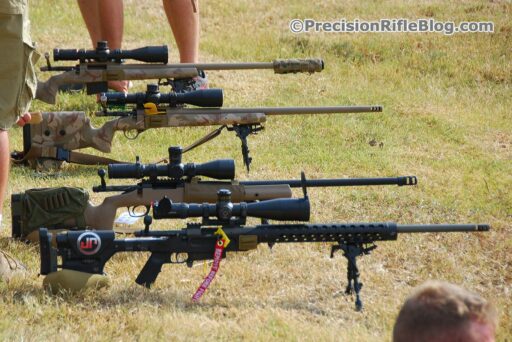Table of Contents
The practice of precision reloading is both an art and a science, requiring meticulous attention to detail and a deep understanding of the materials and processes involved. Hodgdon load data is a critical resource for reloaders seeking to achieve the best possible performance from their ammunition. This article delves into the nuances of Hodgdon load data, exploring its fundamentals, applications for specific powders like Hodgdon Varget, and how it compares to other sources. We’ll also cover practical reloading guidance and advanced techniques for competitive shooters, ensuring that you have a comprehensive understanding of how to leverage Hodgdon’s information for precision reloading.
Key Takeaways
- Hodgdon provides reliable load data that is essential for precision reloading, while BPI’s data is less trustworthy and limited to their own components.
- Hodgdon Varget Smokeless Powder is renowned for its performance across a wide temperature range, making it a top choice for long-range shooting and hunting.
- Precision reloading requires careful selection of components and adherence to a detailed step-by-step process, utilizing resources like Hodgdon’s data for optimal results.
- Comparing load data from various sources like Hodgdon, Precision Reloading, and BPI is crucial for making informed decisions and ensuring safety and accuracy.
- Advanced reloading techniques, including fine-tuning loads and understanding ballistics, can give competitive shooters an edge when using Hodgdon data.
The Fundamentals of Hodgdon Load Data


Understanding the Basics of Reloading
Reloading ammunition is both an art and a science, requiring precision and attention to detail. The process involves replacing the spent primer, powder, and bullet in a used cartridge casing. It’s essential for reloaders to understand the components and steps involved to ensure safety and achieve the desired ballistic performance.
- Safety is paramount, and following established guidelines is critical.
- Selecting the right powder, primer, and bullet for the cartridge is a foundational step.
- Accurate measurement and consistency are key to producing reliable ammunition.
Reloading is not just about saving money; it’s about tailoring ammunition to specific needs, improving accuracy, and enhancing the shooting experience.
For those new to reloading, it’s advisable to start with comprehensive guides and manuals that provide detailed information from major bullet and powder manufacturers. These resources are designed to be practical, with features such as heavyweight paper and spiral binding for easy reference during the reloading process.
The Importance of Accurate Load Data
The pursuit of precision in reloading is inextricably linked to the accuracy of the data used. Inaccurate load data can lead to dangerous overpressure situations, inconsistent performance, and ultimately, failure to achieve the desired results. It is crucial for reloaders to understand that the data they rely on is not just a set of numbers, but a foundation for safety and performance.
- Safety: Ensuring that the loads are within safe pressure limits to prevent firearm damage or personal injury.
- Consistency: Achieving reliable performance across different environmental conditions and shooting sessions.
- Optimization: Fine-tuning loads to specific firearms for improved accuracy and efficiency.
The responsibility for safe reloading practices cannot be overstated. Reloading data should be treated with the utmost respect and caution, as it directly impacts the safety and effectiveness of the shooting experience.
It is imperative to cross-reference information and verify the reliability of sources. Whether you’re consulting Hodgdon, Precision Reloading, or any other provider, always consider the credibility and thoroughness of the data presented. A comparative analysis of different data sources can be invaluable in identifying the most trustworthy information.
Evaluating Hodgdon’s Data Quality
When it comes to reloading, the quality of load data can significantly impact both safety and performance. Hodgdon is renowned for providing reliable and comprehensive load data to reloaders. Their annual manuals and online resources are frequently updated, ensuring that shooters have access to the latest information.
Hodgdon’s commitment to data quality is evident through their meticulous testing and presentation of data. For instance, the Hodgdon Annual Manual offers a wealth of information for a wide range of cartridges. However, it’s crucial to compare this data with other sources to confirm its accuracy and applicability to specific reloading scenarios.
While Hodgdon’s data is generally well-regarded, it’s important for reloaders to remain critical and verify data through cross-referencing and practical application.
Reloading enthusiasts often discuss the quality of Hodgdon’s data in comparison to other suppliers. Here’s a summarized perspective from the community:
- Hodgdon provides good loading data, readily available online.
- Precision Reloading is also noted for good data, available upon request.
- BPI’s data is criticized for being limited to their own components and having questionable pressure and velocity figures.
Optimizing Loads with Hodgdon Varget Smokeless Powder


Characteristics and Advantages of Hodgdon Varget
Hodgdon Varget Smokeless Powder is renowned for its exceptional performance across a wide range of temperatures, making it a reliable choice for shooters and hunters alike. Its fast-burning and clean-burning properties contribute to enhanced accuracy, whether at the bench or in the field. The powder’s versatility is evident in its suitability for various calibers, particularly .22-250 Rem, .223 Rem, .308 Win, and .375 H&H.
Hodgdon Varget’s consistency in ignition and burn rate from 0\u00b0F to 125\u00b0F ensures minimal deviation in performance, which is critical for precision reloading.
Advantages of Hodgdon Varget include:
- Quick ignition and a very fast burn rate
- Excellent performance in extreme temperatures
- Suitable for a wide range of calibers
- Contributes to cleaner kills when hunting
The following table summarizes the key specifications of Hodgdon Varget Smokeless Powder:
| Feature | Description |
|---|---|
| Container Size | 1 lb |
| Temperature Stability | 0\u00b0F to 125\u00b0F |
| Suitable Calibers | .22-250 Rem, .223 Rem, .308 Win, .375 H&H |
| Burn Rate | Very fast |
| Ignition | Quick |
Given its superior qualities, Hodgdon Varget is a top choice for those seeking precision and consistency in their reloads.
Calibrating Loads for Different Weather Conditions
When reloading ammunition, calibrating loads for different weather conditions is crucial for maintaining consistency and accuracy. Hodgdon Varget smokeless powder is known for its temperature stability, which is a significant advantage for shooters who face varying climates. A field test measuring the temperature stability of Hodgdon H4350 and Varget powders showed promising results for those seeking reliable performance across different temperatures.
The ability to maintain a consistent burn rate despite changes in temperature ensures that shooters can expect repeatable ballistics and point of impact with their reloads.
Understanding the effects of temperature on powder performance can lead to more precise reloads. Below is a simplified sensitivity chart for reference:
| Temperature (F) | Velocity (fps) | Pressure (psi) |
|---|---|---|
| 59 | 3000 | 45,000 |
| 70 | 3050 | 46,000 |
| 90 | 3100 | 47,500 |
This table illustrates how incremental changes in temperature can affect the velocity and pressure of a cartridge. By adjusting the load to compensate for these variations, shooters can achieve greater accuracy and safety.
Case Studies: .22-250 Rem, .223 Rem, .308 Win, .375 H&H
In the realm of precision reloading, Hodgdon’s data serves as a critical resource for shooters aiming to tailor their ammunition for optimal performance. Case studies on popular calibers such as .22-250 Rem, .223 Rem, .308 Win, and .375 H&H demonstrate the versatility and effectiveness of Hodgdon powders.
For each caliber, specific load recipes have been tested and refined to ensure safety and accuracy. Below is a summary of the findings:
- .22-250 Rem: Known for its high velocity and flat trajectory, this caliber benefits from the consistent burn rate of Hodgdon Varget, which maintains performance across a wide temperature range.
- .223 Rem: As a favorite among competitive shooters, the .223 Rem requires precise loads. Hodgdon’s data provides a solid starting point for developing loads that minimize group sizes.
- .308 Win: The .308 Win is a versatile round, and Hodgdon’s comprehensive data helps reloaders find the sweet spot for their specific rifle and application.
- .375 H&H: This classic big game caliber demands loads that are both powerful and reliable. Hodgdon’s data includes options for heavy bullets that maintain accuracy over long distances.
Precision reloading is as much an art as it is a science. The case studies not only highlight the practical applications of Hodgdon’s data but also underscore the importance of meticulous load development for achieving the desired results.
Practical Guide to Precision Reloading


Selecting the Right Components for Reloads
Selecting the right components is crucial for precision reloading. The choice of primer, powder, and bullet must be made with care, as each component can significantly affect the performance of your reloads. For instance, when considering primers, one must account for the sensitivity and strength required for the specific caliber and gun type.
When it comes to powder, Hodgdon’s extensive range offers options for various calibers and applications. The powder’s burn rate and the load’s pressure are key factors that influence the selection. Bullets, on the other hand, are chosen based on the desired ballistic performance and the firearm’s twist rate.
It is essential to match the components to the intended use of the ammunition, whether it be for hunting, target shooting, or competitive events.
Here is a basic checklist for component selection:
- Primer: Match the size and type to your cartridge and firearm.
- Powder: Choose a powder with the appropriate burn rate for your load.
- Bullet: Select a bullet that suits your shooting discipline and firearm’s specifications.
Step-by-Step Reloading Process Using Hodgdon Data
The process of reloading with Hodgdon data is a meticulous one that requires attention to detail and precision. Begin by consulting the Hodgdon reloading data to select the appropriate powder charge for your specific cartridge and bullet combination. This data is crucial as it provides the foundation for safe and effective reloading practices.
- Gather all necessary components: cases, primers, bullets, and Hodgdon powder.
- Inspect and prepare your cases, ensuring they are clean, resized, and primed.
- Measure and dispense the powder charge as per Hodgdon’s recommendations.
- Seat the bullet to the correct depth and crimp the case if necessary.
- Perform a final inspection of the completed rounds for consistency and quality.
Reloading is both an art and a science. The precision with which each step is executed can greatly influence the performance of your reloaded ammunition. Always prioritize safety and adhere strictly to the guidelines provided by Hodgdon.
Remember to log your reloading data for future reference. This includes recording the date, specific components used, and any observations made during the reloading process. A well-maintained log can be invaluable for tracking performance and making incremental improvements to your loads.
Troubleshooting Common Reloading Issues
When precision reloading, encountering issues is not uncommon, but knowing how to effectively troubleshoot can save time and ensure safety. Common problems range from inconsistent powder charges to bullet seating depth variations, and each requires a specific approach to resolve. Below is a list of typical reloading issues and tips for troubleshooting:
- Inconsistent powder charges: Check your scale calibration and powder dispenser function.
- Bullet seating depth variations: Verify the adjustment of your seating die and consistency of case length.
- Primer seating issues: Inspect the primer pocket and ensure the priming tool is set correctly.
- Case sizing discrepancies: Confirm the sizing die is properly adjusted for the batch of brass you’re working with.
It’s crucial to approach reloading issues methodically, examining each step of the process to identify where the problem originates. Remember, safety is paramount, and any doubts should lead to consulting published load data or a more experienced reloader.
Always cross-reference your load data with multiple sources to minimize errors. Ultimate Reloader LLC emphasizes the importance of using data at your own risk and the necessity of cross-referencing with manufacturer’s published data.
Comparative Analysis of Reloading Data Sources


Hodgdon vs. Precision Reloading vs. BPI Data
When comparing reloading data sources, it’s crucial to consider the quality and availability of the information provided. Hodgdon is renowned for its comprehensive and reliable data, which is freely accessible to reloaders. Precision Reloading also offers robust data, particularly for those who reach out with inquiries. On the other hand, BPI’s data has drawn criticism for its limited scope, focusing only on their own components, and for the additional cost associated with accessing their load data.
The following table summarizes the key differences between these sources:
| Source | Data Availability | Data Quality | Cost |
|---|---|---|---|
| Hodgdon | Extensive | High | Free |
| Precision Reloading | Good (upon request) | High | Free |
| BPI | Limited | Questionable | Paid |
It’s essential for reloaders to not only have access to a wide range of data but also to trust the accuracy and safety of the information. Hodgdon and Precision Reloading are generally preferred for their quality and ease of access, while BPI’s offerings are often met with skepticism.
Reliability of data is paramount, as inconsistencies can lead to dangerous loading practices. Users have expressed concerns over BPI’s pressure and velocity figures, suggesting that they may not always be reliable. In contrast, Hodgdon’s data is frequently cited in community forums and is considered a benchmark for safety and performance.
Assessing Reliability and Consistency Across Sources
When it comes to reloading, the reliability and consistency of load data are paramount. Hodgdon is renowned for its comprehensive and trustworthy data, which many reloaders use as a benchmark. Precision Reloading also offers reliable data upon request, while BPI’s data, which is tied to their own product sales, has been criticized for its fit and questionable pressure and velocity figures.
Reliability in load data is not just about the numbers; it’s about the peace of mind that comes with knowing your reloads are safe and effective.
Comparing these sources requires a careful look at their data’s reproducibility and accuracy. Here’s a brief overview of user feedback on these sources:
- Hodgdon: Widely trusted, free access to data.
- Precision Reloading: Reliable data available upon request.
- BPI: Data available for purchase, with some concerns over quality.
It’s essential to cross-reference load data with multiple sources and to be cautious of any data that seems out of line with established standards. Always prioritize safety and precision in your reloading practices.
Making Informed Decisions Based on Data Quality
When it comes to precision reloading, the quality of your data can make or break your shooting performance. Making informed decisions based on data quality is crucial for achieving consistent and accurate results. Reloading data from various sources can vary significantly, and it’s essential to assess the reliability and consistency of this information before incorporating it into your reloading practices.
- Hodgdon is known for providing reliable load data that many shooters trust.
- Precision Reloading offers detailed data, but be cautious of changes in formulations, such as the reformulated Green Dot powder.
- BPI data has been criticized for its quality, with some users finding the pressure and velocity data questionable.
By critically evaluating the data from these sources, you can select the most accurate and safe load data for your specific needs. This careful scrutiny will help ensure that your reloads perform as expected, regardless of the conditions or firearm used.
Advanced Techniques in Reloading for Competitive Shooting


Fine-Tuning Loads for Maximum Accuracy
Achieving the pinnacle of precision in reloading requires meticulous attention to detail and a deep understanding of the variables at play. Fine-tuning loads is an art that balances numerous factors to achieve the best possible performance from a firearm. For competitive shooters, this process is critical and can be the difference between winning and losing.
- Start with a baseline load and make incremental adjustments.
- Record every change and its impact on performance.
- Pay close attention to bullet seating depth, powder charge, and primer selection.
Consistency is key in reloading. Even minor deviations can significantly affect accuracy and performance.
When working with Hodgdon data, it’s essential to cross-reference with other sources and your own empirical results. This ensures that you are not solely reliant on a single set of data, which may not be optimal for your specific firearm or conditions.
The Role of Ballistics in Competitive Reloading
In the realm of competitive shooting, ballistics plays a pivotal role in achieving precision and consistency. Understanding the intricate relationship between bullet trajectory, velocity, and environmental factors is essential for reloaders aiming to fine-tune their ammunition.
Ballistics data, when combined with high-quality Hodgdon load data, enables shooters to make informed adjustments to their loads. This synergy is critical for those striving to reach the zenith of accuracy in their respective shooting disciplines.
The meticulous process of competitive reloading is not just about the components; it’s about understanding the science behind each shot.
Here is a brief overview of factors to consider in ballistics for competitive reloading:
- Bullet weight and design
- Muzzle velocity
- Ballistic coefficient
- Environmental conditions such as temperature and altitude
By mastering these elements, shooters can optimize their reloads for any given scenario, ensuring that each round fired performs as expected.
Leveraging Hodgdon Data for Competitive Edge
For competitive shooters, leveraging Hodgdon data can be the difference between winning and placing second. Hodgdon’s comprehensive load data provides a foundation for fine-tuning ammunition to achieve peak performance in precision rifles. By meticulously adjusting loads based on Hodgdon’s recommendations, competitors can ensure their ammunition is optimized for their specific firearm and shooting conditions.
Precision is paramount in competitive shooting, and the right data is a crucial component. Hodgdon’s load data, when used effectively, can lead to more consistent and accurate shots.
Understanding the nuances of Hodgdon’s load data allows shooters to make informed decisions about their reloading practices. Here’s a quick checklist for competitive shooters to consider:
- Review Hodgdon’s latest load data for your caliber
- Analyze the recommended powder charges and bullet types
- Experiment with slight variations under controlled conditions
- Record the results and performance of each load
- Adjust your strategy based on the data and observed outcomes
Competitive shooters who embrace a data-driven approach to reloading can gain a significant advantage. Hodgdon’s load data is a valuable resource that, when paired with diligent practice and analysis, can lead to superior accuracy and consistency on the range.
Conclusion
In conclusion, Hodgdon provides reliable and comprehensive load data that is essential for precision reloading. Their data, especially for powders like Hodgdon Varget, is invaluable for achieving accuracy in long-range shooting and hunting across various calibers. While BPI’s data has been criticized for its limitations and reliability, Hodgdon’s information stands out as a trusted resource. It’s important to note that Federal hulls are a preferred choice for reloaders, and using the right components, such as Gualandi and B & P wads, can yield excellent results. As always, safety and cross-referencing with manufacturers’ published data are paramount in reloading practices. Whether you’re a seasoned reloader or new to the craft, Hodgdon’s load data can be a cornerstone of your precision reloading endeavors.
Frequently Asked Questions
How reliable is Hodgdon load data compared to other sources?
Hodgdon load data is considered to be very reliable and is a popular choice among precision reloaders. In contrast, BPI’s load data is often criticized for its quality, and it’s advisable to cross-reference any data with multiple sources.
Is there a cost associated with accessing Hodgdon load data?
No, Hodgdon provides its load data for free, whereas BPI charges for their data, which is limited to components they sell.
Can Hodgdon Varget Smokeless Powder be used in various weather conditions?
Yes, Hodgdon Varget Smokeless Powder is known for its excellent performance across a wide temperature range, from 0°F to 125°F, making it suitable for different weather conditions.
What cartridges are well-suited for Hodgdon Varget Smokeless Powder?
Hodgdon Varget Smokeless Powder is an excellent choice for cartridges such as .22-250 Remington, .223 Remington, .308 Winchester, and .375 H&H.
How does Precision Reloading’s data quality compare to Hodgdon’s?
Precision Reloading is also known for providing good quality load data, and many reloaders use their data successfully. However, it’s always recommended to verify data from multiple sources.
Are there any disclaimers to be aware of when using reloading data from online sources?
Yes, it’s crucial to understand that online sources and manuals are not responsible for errors in load data and cannot control individual loading practices. Users should always cross-reference data and follow safe loading practices.





